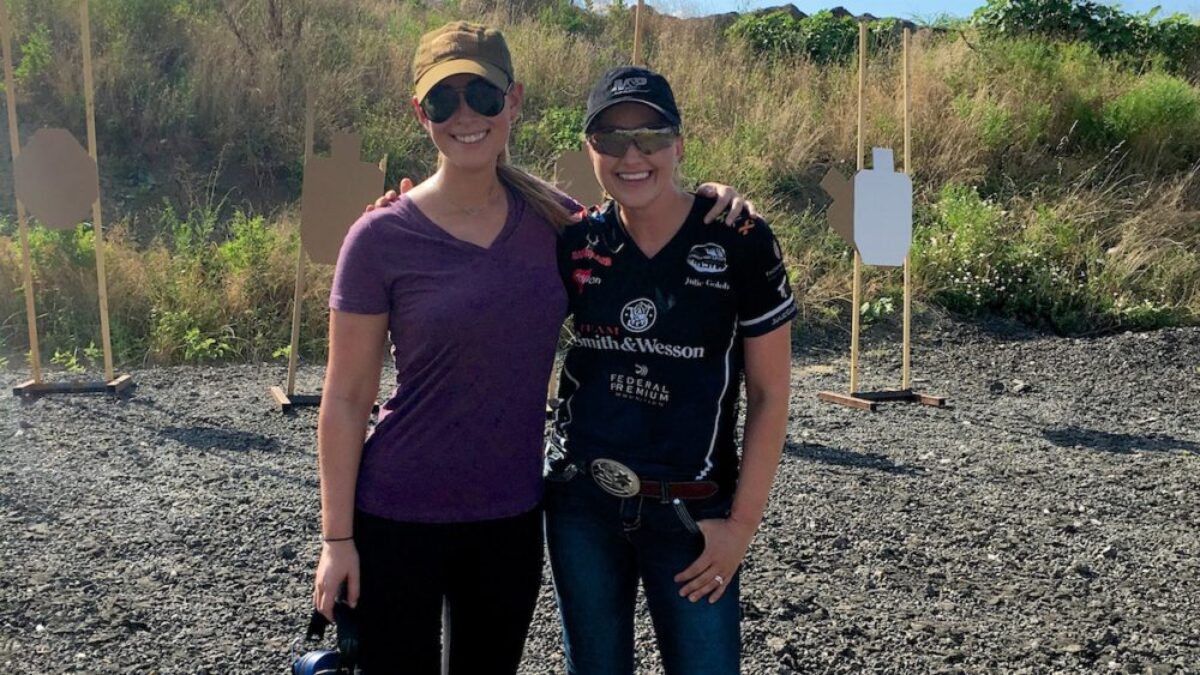How to Get Started in Practical Shooting
Practical shooting is SO MUCH FUN! It’s a sport many enjoy in the United States (USPSA) and abroad (IPSC). In this season of NRA Women’s Love at First Shot sponsored by Smith & Wesson, Natalie Fletcher and her friend Anna are going to shoot their first practical shooting competition. To do it we took a step-by-step approach.
Research
One of the best ways to get a feel for a shooting sport is to go watch an event. Get online and research local ranges and practical shooting events near you. USPSA even has a club finder on its website. After you click on the “Find Clubs” link you may need to dig around on several web pages to find out when and where to go. Trust me, it will be worth it. Don’t be afraid to reach out to club coordinators and match directors via email to get the information you need.
Head to the Range
Once you’ve found an event, don’t forget to bring eye and ear protection and dress appropriately for the weather. Ranges can be a little tough to find. If you don’t see any signage when you arrive, look for an area with cars and multiple pistol ranges. Ask where you can find the registration or the check-in area. You may need to sign in and fill out paperwork to watch. This is also a good time to ask the staff if the club offers an introduction to USPSA course or a new shooter program.
If you’re attending a local match, there may only be a few stages set up in the pistol bays. A stage is a single course of fire and if you’re attending a major event, there will be many of them. You are usually allowed to walk into the bays to get a better view, but make sure you stay back so that you don’t interfere with the competition. Look where other shooters are standing. When in doubt, ask shooters or the staff where you should be to catch all the action.
Watching a shooter run through a stage for the first time can seem overwhelming. What are they shooting at? Where are they going? How do they know where all the targets are? You’ll want to stick around to watch the whole process.
Match Procedure
When a squad walks up to a bay they’ll receive a stage briefing. This briefing will outline how many shots are required, the number of targets, and special safety considerations for the course of fire. Shooters will be given a few minutes to walk on the stage to devise a plan that works best for them. A Range Officer (RO) will ask everyone to clear the range and the first shooter will be called up to load, make ready and give it a go.
When the shooter has completed their run, the RO will ask if they are finished and to unload and show clear. Once the range is clear and safe, the shooter next on the list to shoot (the on-deck shooter) will be allowed to walk the stage while the ROs score the targets and the rest of the squad resets the stage.
Pay attention to the stage briefing and watch a few shooters run through the course of fire to get an understanding of how the match flows. This will help you understand the process and better prepare you for your first match. You can follow a squad through the entire match or walk around to watch other squads on other pistol bays.
Don’t be afraid to ask questions, but do keep in mind that some shooters need time to prep for their turn. The best time to ask is when someone is coming back from pasting targets or when they have completely finished shooting the course.
Take Notes
Jot down notes and any questions you have on your phone or on paper so that you won’t forget them. You’ll want them for when you take your introduction course or follow up with the club coordinator. Watch Walk Before You Run to see how I worked with Natalie on the basic shooting skills she needed to compete in her first match. Stay tuned for another blog post breakdown coming soon and for more on Natalie’s journey coming to NRA.TV.

